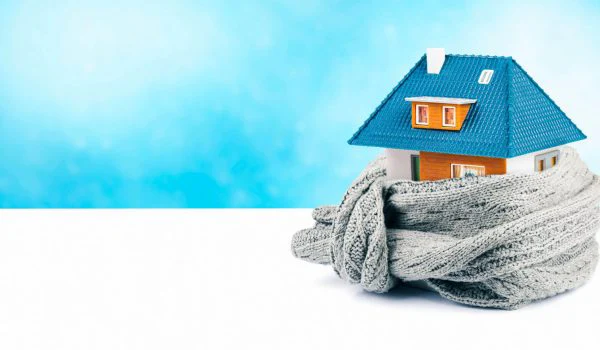
How R38 Insulation Works with Radiant Barriers in Los Angeles Homes
Los Angeles homes fight heat more days than not. Attics can exceed 130°F in summer, and coastal moisture can creep in during cooler months. In this climate, R38 insulation paired with a radiant barrier can cut heat gain, stabilize indoor comfort, and lower electric bills. The pairing works because each material targets a different form of heat: conduction and radiation. Installed correctly, they reduce attic temperatures, help HVAC equipment cycle less, and keep rooms more even from Venice to Van Nuys.
What R38 Actually Means in a Los Angeles Context
R-value measures resistance to conductive heat flow. R38 is the code-recommended attic level for many Los Angeles neighborhoods in Climate Zone 9 and 10, and it reflects what works in practice for the region’s long cooling season. For typical joist depths, R38 usually means about 10 to 12 inches of loose-fill fiberglass or cellulose in an open attic. In homes with framed cathedral ceilings, it may require high-density batts or spray foam.
In a San Fernando Valley ranch, upgrading from R19 to R38 can easily shave 10 to 20 percent off summer cooling costs based on utility data from similar retrofits. The exact savings vary by HVAC efficiency, shading, and attic ventilation.
How Radiant Barriers Reduce Attic Heat
Radiant barriers are reflective surfaces, often aluminum foil laminated to a substrate. They reduce radiant heat transfer from a hot roof deck into the attic. Rather than absorbing roof heat, they reflect it back outward. In Los Angeles, where sun exposure is intense through late afternoon, this matters. A proper radiant barrier can lower peak attic air temperatures by 15 to 30°F on a clear summer day.

Placement is key. In most Los Angeles attic retrofits, the foil is stapled to the underside of the rafters, creating an air space on the shiny side. Without that air gap, the foil behaves like a conductor and loses much of its effect. The goal is to shield the insulation below from radiant load, so the R38 layer stays cooler and performs closer to its rated value.
Why the Combo Works Better Than Either Alone
Insulation slows heat that tries to move through solid materials. Radiant barriers reflect radiant heat before it reaches the insulation. In hot, sunny climates, most daytime attic heat starts as radiation from the roof. The radiant barrier cuts that at the source. Then the R38 insulation blocks the remaining conductive and convective movement into living spaces.
In field conditions across Los Angeles, homeowners notice fewer “hot room” complaints on second floors and more stable evening temperatures. HVAC systems run shorter cycles and sometimes maintain setpoints on lower fan speeds. In Glendale and Pasadena, clients with tile roofs often see outsized benefits because roof mass stores afternoon heat; the barrier helps prevent that stored heat from radiating down in the early evening.
Materials That Pair Well with R38
Fiberglass and cellulose both work at R38, but they behave differently. Fiberglass resists moisture absorption and remains fluffy when the attic stays dry and ventilated. Cellulose packs tighter and blocks air movement through the insulation layer more effectively, which can help in windy attics or older homes with many penetrations. In coastal areas like Santa Monica or Redondo Beach where fog is common, fiberglass paired with disciplined air sealing and venting often performs well long term. In hillside homes in Highland Park or Echo Park with leaky attic floors, dense cellulose can reduce drafts coming through can lights and ceiling cracks.

Radiant barriers come in perforated and non-perforated versions. In Los Angeles, perforated foil is typically preferred for attic applications because it allows vapor to pass and reduces condensation risk.
Air Sealing Makes or Breaks the Upgrade
Insulation does not stop air leaks. Before topping to R38, an installer should seal obvious gaps around recessed lights, plumbing penetrations, top plates, and flue chases. This prevents conditioned air from escaping and hot attic air from entering the living space. In a typical 1,600-square-foot home in Northridge, sealing 30 to 50 common penetrations can reduce leakage by hundreds of CFM on a blower door test. That translates into quieter rooms, better indoor air quality, and more accurate thermostat readings.
Ventilation: The Quiet Partner in Attic Performance
A radiant barrier lowers radiant load, but the attic still needs to flush out hot air. Balanced intake and exhaust ventilation helps. Soffit vents feed cooler outdoor air; ridge or high gable vents exhaust hot air. In many Los Angeles homes, soffit vents are clogged with paint or insulation. Clearing them and adding baffles preserves airflow and keeps the R38 insulation from drifting into the eaves. Attic fans are situational. In tightly sealed houses they can depressurize and pull conditioned air from the living space. A pro will evaluate this before recommending a fan.
Common Installation Pitfalls in Los Angeles Attics
Stapling foil directly to the roof deck without an air gap reduces performance. Laying foil on top of insulation collects dust and loses reflectivity. Compressing batts to hit R38 in shallow joists lowers the effective R-value; it is better to build up depth with loose-fill or add cross-strapping. Covering can lights that are not IC-rated is a fire hazard. Blocking soffits with insulation cuts airflow and can cause moisture issues near the eaves. Pure Eco Inc addresses each of these during inspections and uses baffles, damming, and proper clearances to protect both performance and safety.
Cost, Payback, and What Los Angeles Homeowners Actually See
Pricing varies by attic size, access, debris removal, and whether rodent remediation is needed. For a typical 1,200 to 2,000-square-foot attic, upgrading to R38 with air sealing and adding a rafter-mounted radiant barrier usually falls in a mid-four-figure range. Homes with heavy old insulation removal or knob-and-tube safety work can land higher. Many clients see noticeable comfort gains immediately and utility reductions within the first full billing cycle of summer or winter. A realistic payback window is often three to seven years, shorter in the Valley and Inland neighborhoods with higher cooling loads.
Local Codes and Practical Details for Los Angeles
Los Angeles permits often require meeting or approaching current energy standards for attic insulation during major alterations. Smoke alarms and fire-blocking details around flues and chimneys must be respected. In older Spanish and Craftsman homes, roof framing can be uneven or shallow, which guides whether to use blown-in loose fill, high-density batts, or foam in vaulted sections. Pure Eco Inc documents pre-existing conditions, photographs air sealing work, and labels depth markers every 300 to 500 square feet so inspectors and homeowners can verify R38 coverage.
What to Expect During a Visit
An assessment usually takes 45 to 90 minutes. The technician checks attic access, measures current insulation depth, notes duct conditions, and photographs penetrations that need sealing. Moisture readings near the eaves and along the north-facing roof plane help catch early condensation risks. If the home has a radiant barrier already, the team checks its placement, dust accumulation, and whether any sections were removed during prior electrical work. The proposal separates air sealing, insulation, radiant barrier, and optional ventilation fixes, so homeowners can see the value of each step.
When R38 and a Radiant Barrier Are Not Enough
Some Los Angeles homes suffer from direct solar gain through west-facing windows, leaky duct systems, or undersized returns. In these cases, attic upgrades still help, but the final result improves after sealing ducts, increasing return air capacity, or adding exterior shading. In cathedral ceilings with 2x6 rafters, R38 may be unrealistic without foam; a hybrid approach with R19 batt plus foil and an exterior cool roof can still deliver strong results. Clear expectations prevent frustration, and a thorough inspection identifies these limits before work begins.
Simple homeowner checks before calling Pure Eco Inc
- Look for dark streaks on insulation near can lights or chases, which signal air leaks.
- Measure current insulation depth in a few spots; 10 to 12 inches is a quick visual benchmark for R38 loose-fill.
- Check soffit vents from the exterior for blockage and from the attic for baffles.
- Note afternoon room temperatures on the top floor; a 5 to 8°F rise versus the first floor suggests attic heat issues.
- Peek at the roof sheathing on a hot day; if it’s scorching to the touch and there’s no reflective foil, a radiant barrier can help.
Why homeowners search for “r38 insulation Los Angeles” and call Pure Eco Inc
The phrase points to two needs: lower summer bills and steadier comfort. Los Angeles heat, sun exposure, and long cooling seasons make attic improvements one of the highest-impact upgrades. R38 insulation stops conductive heat, while a radiant barrier cuts the radiant load that starts the problem. Together they lighten the strain on HVAC systems from Silver Lake to Sherman Oaks.
Pure Eco Inc has installed thousands of attic systems across Los Angeles, from compact bungalows to large two-story homes. The team brings practical judgment to each project: which material suits the house, how to protect ventilation, and where air sealing gives the best return. Homeowners get clear Pure Eco Inc. Los Angeles r38 insulation Los Angeles pricing, photos of the work, and tested results.
Ready to reduce attic heat and stabilize indoor comfort? Call Pure Eco Inc to schedule an on-site assessment anywhere in Los Angeles, CA. Ask about R38 insulation with a radiant barrier and get a plan that fits your home, your roof, and your goals.
Pure Eco Inc. provides professional attic insulation and energy-saving solutions in Los Angeles, CA. For over 20 years, our family-owned company has helped homeowners improve comfort, reduce utility bills, and make their homes more energy efficient. We specialize in insulation upgrades, spray foam installation, and attic cleanup for homes across Los Angeles County. At Pure Eco Inc., we believe in treating our customers like family and creating a greener, healthier living environment for every household we serve. Call today to schedule an attic insulation inspection or get a free estimate. Pure Eco Inc.
422 S Western Ave #103 Phone: (213) 256-0365 Website: https://www.pureecoinc.com Social Media:
Facebook |
X |
Instagram |
Yelp
Map: View on Google Maps
Los Angeles,
CA
90020,
USA